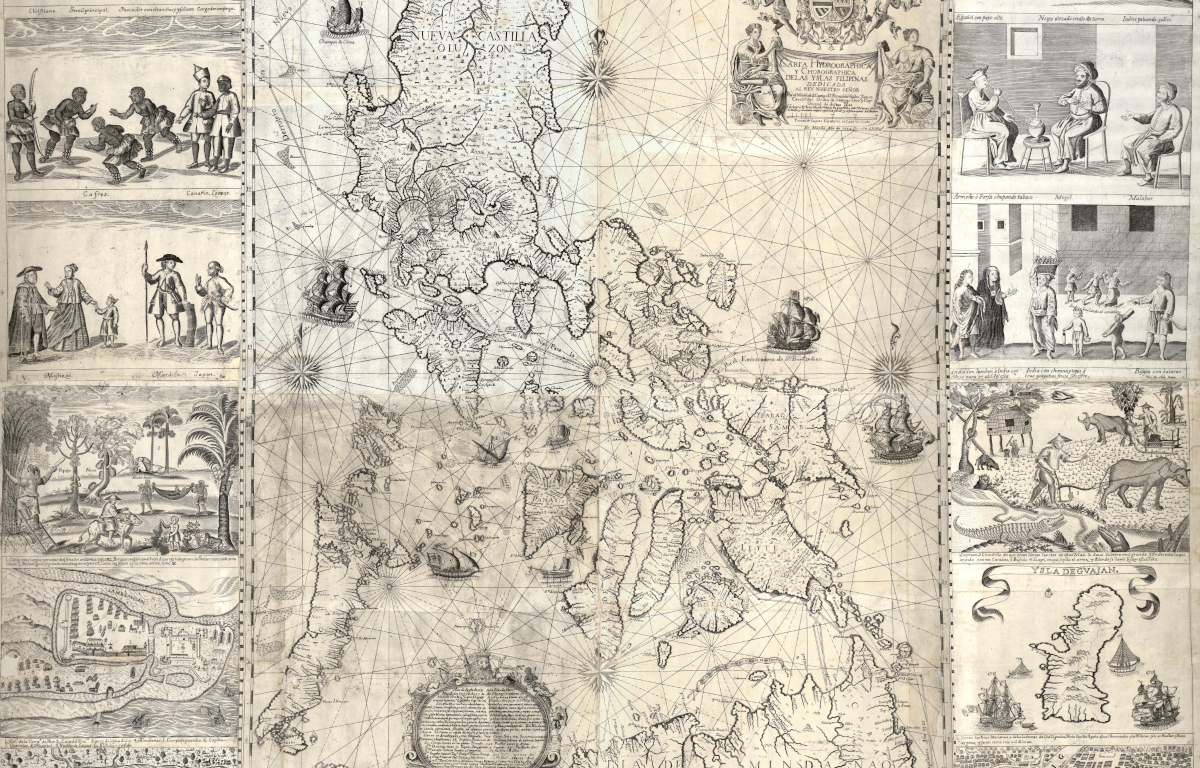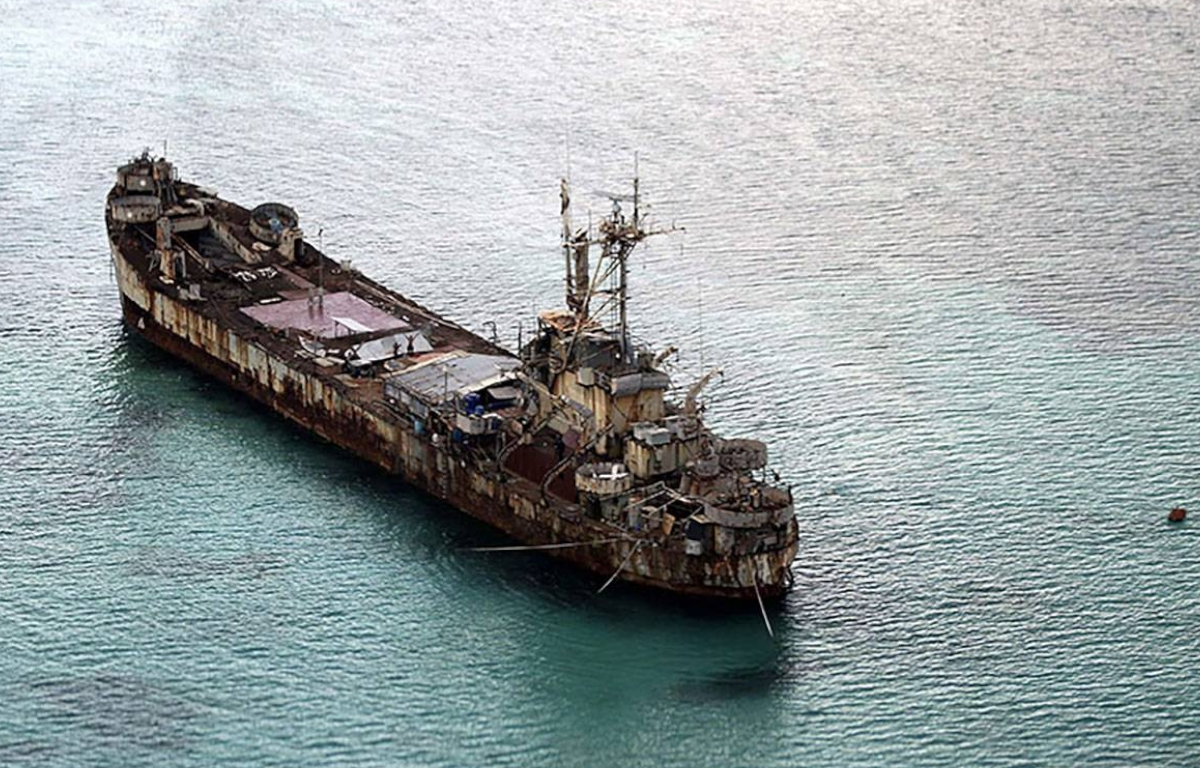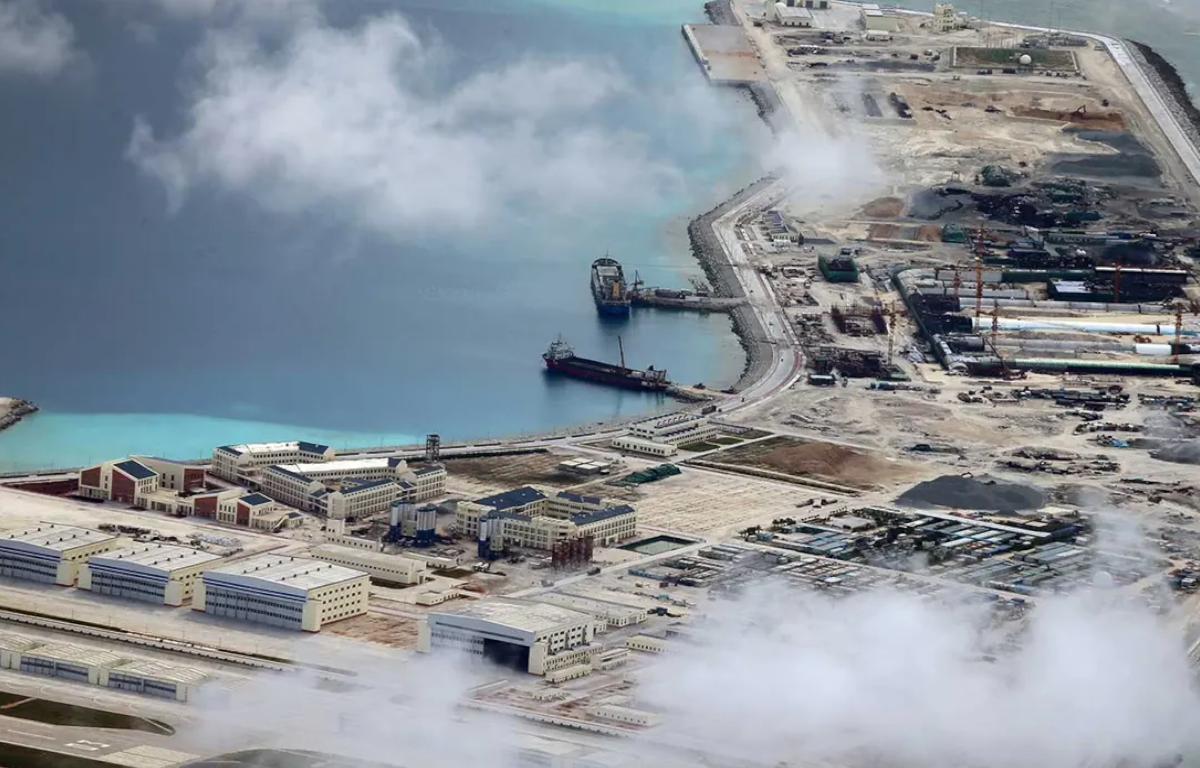
The Ayungin Shoal, also known as the Second Thomas Shoal, is a submerged coral reef in the South China Sea. It lies approximately 105 nautical miles west of Palawan, well within the exclusive economic zone (EEZ) of the Philippines as recognized under international law, particularly the United Nations Convention on the Law of the Sea (UNCLOS).
The dispute at Ayungin centers on a rusting, grounded ship, the BRP Sierra Madre. Originally a U.S. Navy tank landing ship, the Sierra Madre was deliberately run aground in 1999 by the Philippines to serve as a makeshift military outpost, housing a small detachment of Philippine Marines. Its presence in the area has been a symbol of Philippine sovereignty and a deterrent against any potential Chinese encroachment.
However, in recent years, China has increasingly flexed its maritime muscle in the South China Sea, including in areas like Ayungin. Chinese vessels, including maritime militia ships and Coast Guard vessels, have been accused of conducting menacing activities near the Sierra Madre, effectively blockading the area. These activities include the prevention of the resupply and rotation of Philippine troops stationed on the ship.
The Philippines has repeatedly voiced its concerns over the situation in Ayungin. In a recent strongly-worded statement, the Philippine government condemned the actions of Chinese vessels in Ayungin, stating that these vessels have engaged in “harassment, dangerous maneuvers, and provocative actions” that pose a threat to the safety and security of Philippine personnel stationed on the Sierra Madre.
The Philippines argues that these actions not only violate its sovereignty but also run counter to the principles of UNCLOS, which guarantee the rights of coastal states to explore and exploit the natural resources within their EEZs.
The Ayungin dispute is not isolated but is part of a broader territorial and maritime dispute involving multiple claimants in the South China Sea, including China, the Philippines, Vietnam, Malaysia, Brunei, and Taiwan. China has been particularly assertive in advancing its territorial claims, which it often justifies based on historical records and the infamous ‘Nine-Dash Line’ map, which encompasses nearly the entire South China Sea.
The dispute has led to increased tensions and has attracted international attention. The United States, in particular, has expressed concerns about China’s actions in the South China Sea and has conducted freedom of navigation operations (FONOPs) to challenge what it sees as excessive maritime claims.
The Ayungin dispute underscores the complexities and challenges in the South China Sea, where overlapping territorial claims, resource competition, and geopolitical rivalries converge.
In the face of these tensions, the Philippines has called for peaceful and diplomatic solutions to the Ayungin dispute, emphasizing the importance of upholding international law, particularly UNCLOS. The Philippines has also sought the support of the international community in resolving this issue through legal and diplomatic means.
The Ayungin Shoal dispute serves as a reminder of the importance of multilateral dialogue and adherence to international law to address complex maritime issues. It highlights the need for a rules-based approach to manage disputes and ensure the peaceful coexistence of nations in the South China Sea.
In conclusion, the condemnation of Chinese vessels’ actions in Ayungin by the Philippines shines a spotlight on an ongoing and contentious maritime dispute in the South China Sea. This dispute not only tests the sovereignty of the Philippines but also underscores broader geopolitical tensions and the necessity for diplomatic solutions and adherence to international law in the pursuit of a peaceful resolution. The world watches with keen interest as these complex issues continue to unfold in one of the world’s most strategically significant regions.










Share this: